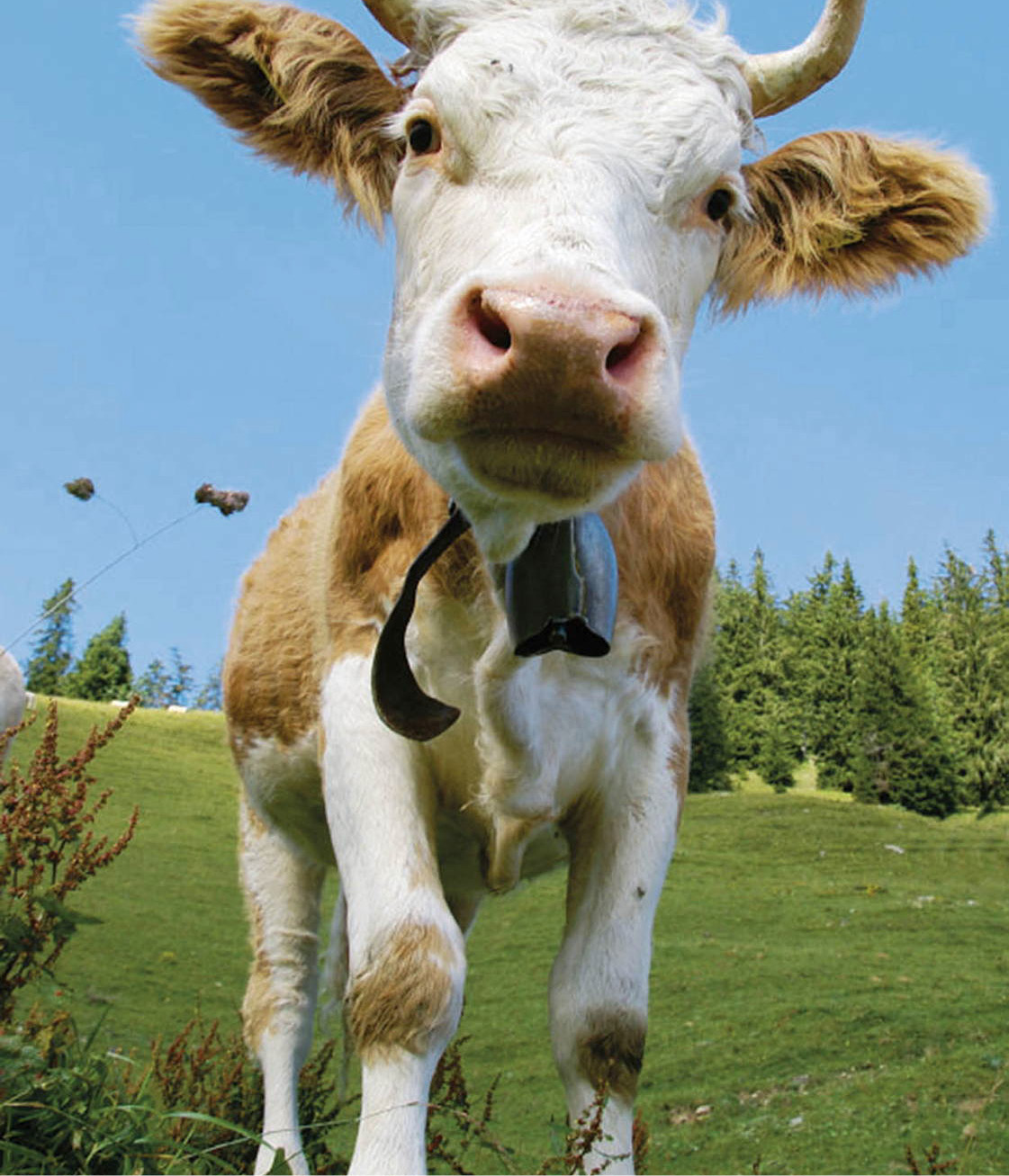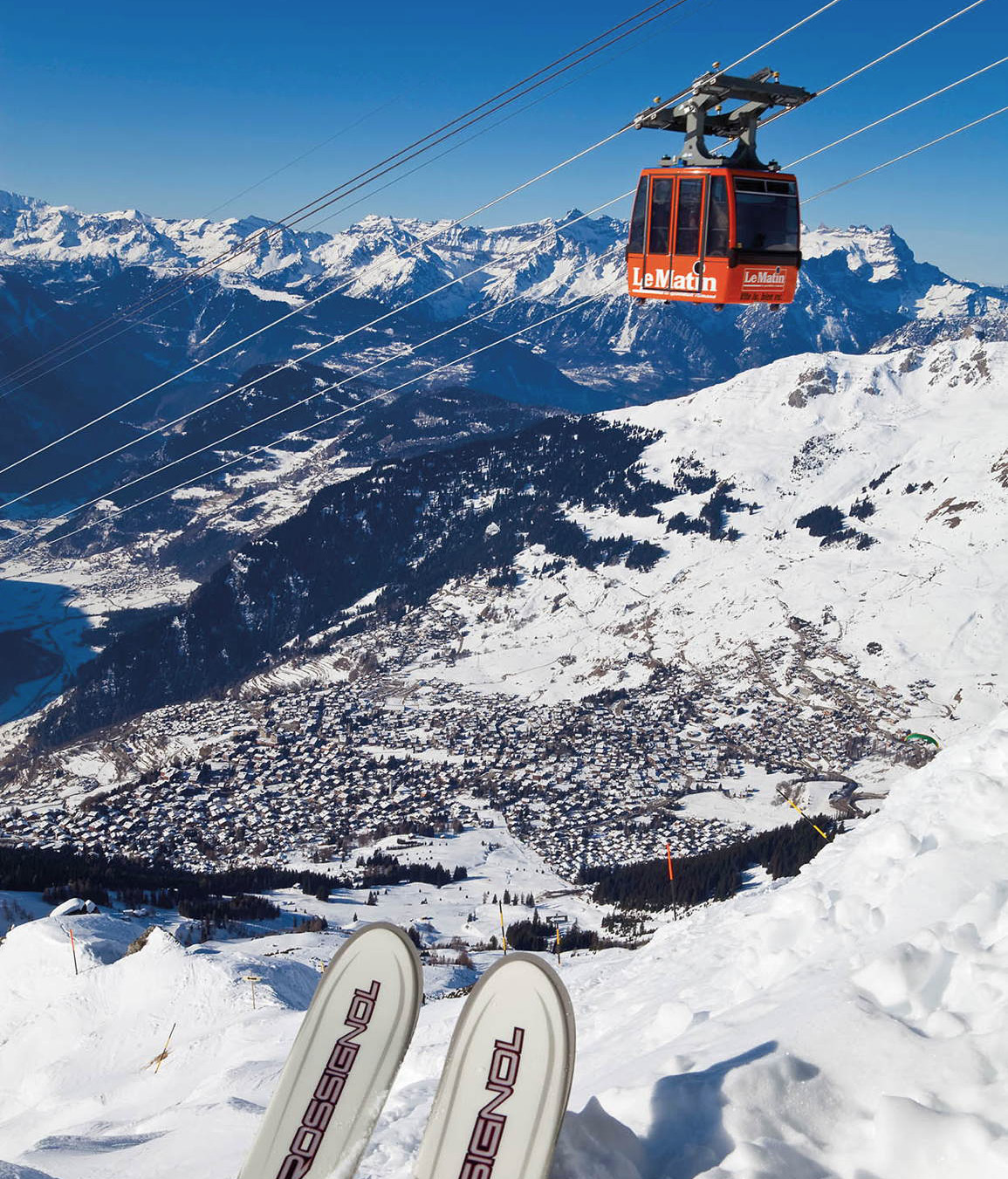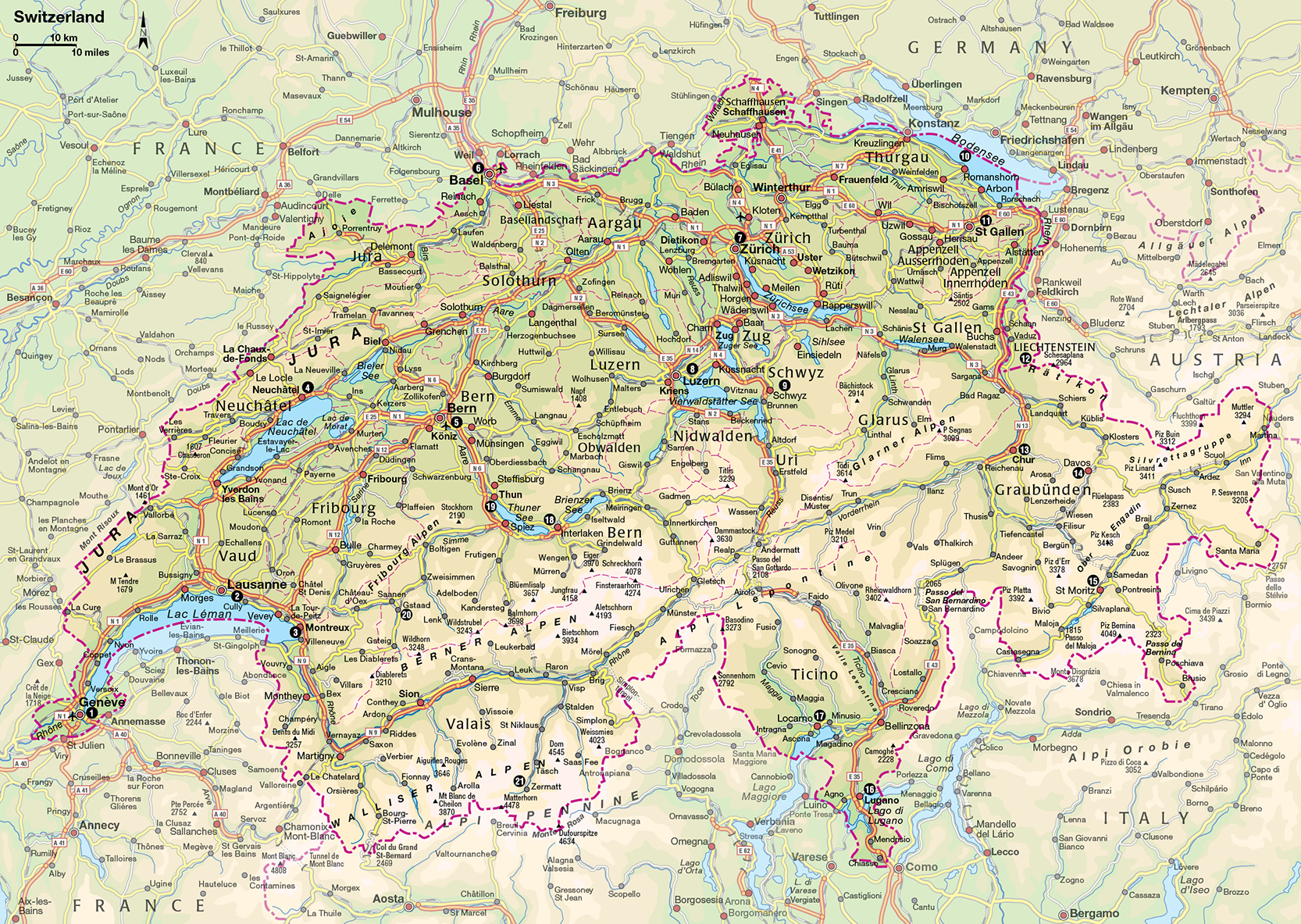The identification letters on Swiss cars, CH, stand for Confoederatio Helvetica, in Latin, for this is one country where it’s still convenient to use the old international tongue rather than have to choose between any of its four official languages. The Helvetii were a Celtic tribe who occupied most of the Swiss plateau before they were crushed by Julius Caesar. The source of the word Switzerland comes from Schwyz, one of three cantons that formed the original union at Rütli in 1291. Today there are 26 member-cantons in the confederation, which all have a strong sense of Swiss identity, even though they are divided between those that speak French, German, Italian and Romansh, a Latin-based language still spoken in the country’s easternmost corner.
Switzerland is a small country, about the same size as the Netherlands but with half the population. About 21 percent of its 7.7 million inhabitants are foreigners. It is renowned for its banking, neutrality, watches and outstanding scenery, and works hard to maintain its independence: all able-bodied male citizens spend time in military training each year. The only remnants of the Reisege, mercenaries who fought in Europe’s wars for four centuries, are the Swiss Guard of the Vatican.

Switzerland is famous for dairy farming.
iStockphoto
Eastern Switzerland and the lowlands are at their best in spring. Summer visitors head for the lakes. Autumn can be enjoyed in the vineyards of the Valais or the Vaud, or in the south-facing, Italian-speaking Ticino, where even in October the days seem longer and certainly warmer than in much of the rest of Switzerland. Finally, winter provides endless possibilities throughout the Alpine region, for skiing, or simply enjoying the beautiful snow scenes.

Verbier ski resort.
AWL Images
The climate can range from subtropical warmth to Alpine cold. This results in an equal variety of vegetation; from fertile plains in the lowlands to mountain pastures and vineyards.
In contrast to tourists of the past, who were compelled to explore the Swiss Alps on foot, on the backs of mules, or in coaches, today’s travellers have an astonishingly comprehensive and, in Swiss style, unerringly efficient public transport system at their disposal.
